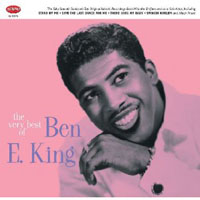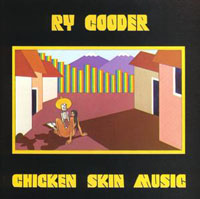Stand By Me
 |
Let me begin this brief historical survey of the song Stand By Me by admitting utter defeat. As one of the top 5 most-performed songs of the 20th century—according to BMI, about 7 million performances—and over 400 recordings of it, I will not attempt or pretend to do it justice. Still, we can once again enjoy the original and sample just a few interesting covers that have been recorded over the decades since the song's release.
That release was in 1961, when The Drifters passed on it (doh!) and Jerry Leiber and Mike Stoller encouraged the author, Ben E. King, to cut it himself. (It's unclear what their contribution was to the writing of the song, but Leiber and Stoller walked away from that session with what must be one of the most valuable songwriter's co-credits in their impressive catalogue.) The song did well the first time 'round and was given a second lease on life when King recut it in 1986 as the theme song for the film that shared it's title. Although he had other hits both with The Drifters and as a soloist, this will be the tune he is remembered for and by.
Audio Clip: Ben E. King performs his own Stand By Me
 |
In my next musical incarnation I want to be Ry Cooder. He's just famous enough that he can get well-paying gigs whenever he needs them, but obscure enough that he could probably duck into Eisenberg's for a Pastrami sandwich without being bothered. Plus, he gets to play with all the cool people. (Here's proof of at least that last claim.)
Another plus: he plays any damn sort of music he wants. A lot of people got hip to that fact with the release of his Buena Vista Social Club, but Cooder's penchant for assimilating various musical styles goes back to a time before that was a common and predictably good career move. Case in point: his 5th release, Chicken Skin Music (1976). The album's title is a Hawaiian synonym for goose bumps, which is what the music on it should give you. Hawaiian influence is evident throughout the recording—but wait, there's more! On Stand By Me, Nortena meets Gospel. And they fall in love. Awww...
If you'll allow me one moment in my Theory Geek robe and goggles, notice that on the chorus—on which we continue using I-vi-IV-V—Cooder's gospel ensemble sings I-IV-ii-V (Kudos to Carolyn M. who caught that one!) Try it out by playing along...they are in G.
Audio clip: Ry Cooder's recording of Stand By Me from Chicken Skin Music, 1976
 |
This may be the first—and quite possibly the last—audio clip I provide from Ike and Tina Turner here at Community Guitar. I do so now for a number of reasons. The first is that I have a thing for Tina, especially for her calves. Always have. Nothing novel in that, I'll grant you. But speaking from a slightly more elevated plane, there are a couple notable and novel things about I&T's take on Stand By Me.
For the first of these I have to redon my Theory Geek robe and goggles to point out out that in their arrangement the vi chord is played as VI, that is to say, as a major chord. (For some reason this conjures up Al Green for me.) They are playing the song in C, so their progression is C-A-F-G. Very cool. (But don't try this at home, kids. In a jam it would make for a real train wreck.)
Second, note how clearly you can hear the blues shuffle on the rhythm guitar. You now have Ike's permission to try that yourself. And lastly, I often say that whenever playing music for others your primary objective ought to be to get them to dance—or at least to show some sign of bodily life: swaying, nodding, sighing, smiling broadly and toe tapping all qualify, for our purposes here, as "dance". What's the point, you ask? Only this: listen to this track and try not to move. I dare you.
Audio Clip: Ike and Tina Turner rock out on Stand By Me
 |
If Tina's approach to this tune (and so many others) tends toward the agitated, Jesse Winchester's is soothingly understated, and all the more effective as a result. His 2009 Love Filling Station included 3 covers and Stand By Me was among them. His vocal is lovely and I encourage you to check out the full track, but here I'll feature the violin solo by Andy Leftwich whom Winchester has on loan from Ricky Skagg's band. Now, for those of you who don't listen to much bluegrass, allow me to offer you a free secret decoder ring. Use it, and you'll notice that the words "Ricky Skagg's band", translate as "musicians with such super-human ability that they must be aliens." So take it as a given that Mr. Leftwich has geared way down on this one. That constitutes an invitation to not only relax and enjoy the music, but to borrow a few of his phrases and learn a thing or two about just how simple a beautiful lead can be. Or vice versa.
Audio clip: Jesse Winchester's Stand By Me with Andy Leftwich on fiddle.
 |
Let's go out with an even more recent performance, this one by an artist with the doubly regal moniker of Prince Royce. (King Lexus was already taken.) Known for his own brand of stylistic blendings, Royce starts with the basic ingredients that make up bachata, a musical style (and dance) that originated in the Dominican Republic. His parents emigrated from there and though Royce himself is born-and-bred-Bronx, maybe this coconut hasn't fallen too far from the tree. Given the prominence of the güiro on King's own recording, it's only right that Royce and other Latin artists would take the rhythmic accompaniment of the song to new levels of sophistication.
Audio Clip: Prince Royce gives Stand By Me the contemporary Latin-American treatment
All Community Guitar Resources text & material © 2006 Andrew Lawrence
